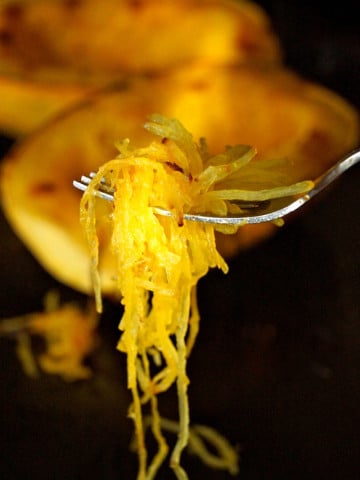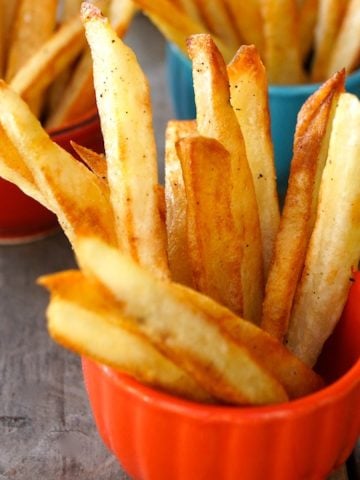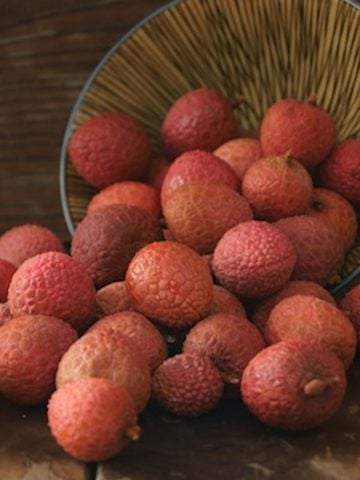Seasoning to taste is a simple process — and once you learn it, it can transform every dish you make by bringing out the natural flavors of the ingredients. It’s a skill anyone can master, and it's the key to making any recipe your own.

What exactly does season to taste mean?
Seasoning to taste is the process of tasting and adjusting the seasonings to your taste. Not only that, it's also about bringing out and intensifying the natural flavors of foods.
~ ~ ~
I assume some of you are comfortable with that phrase. However, there might be some who desperately wish the recipe would give you exact measurements.
Often recipe developers don't want to commit you to a certain measurement of salt and pepper. There's a reason for that.
When writing recipes, I consider that even though we have the same ingredient list and instructions, your tomatoes might be sweeter than mine, your pan might have a heavier bottom, and the flame on your stove might be stronger.
These are so many things that can factor into the final taste of a recipe -- and how much you'll need to season it.

What do we Want Seasoning to Taste to Achieve?
You are not trying to make anything taste salty!
Salt is meant to bring out the natural flavors of foods. For example, when you sprinkle the right amount of salt on an avocado -- the flavor of the avocado is heightened.
Likewise, when you add salt to a complex recipe that contains several ingredients, the salt brightens the flavor of each one -- so you can taste them individually even though they're combined.
When used correctly, salt will make food taste more like itself -- not salty! Get it?
In addition to salt, most recipes are also seasoned with black pepper. While I usually "season to taste with salt and pepper," pepper is more of a spice -- one that should be used gingerly.
How to Season to Taste

For the sake of our discussion, imagine a soup. Say for instance, you're ready to season this Creamy Roasted Pepper Kale Soup (pictured above):
- Taste the soup.
- Can you taste a bit of sweetness from the sun-dried tomatoes? What about the smoky flavor from the fire roasted red peppers and smoked paprika? Heat from the cayenne? Or the peppery kick from the kale?
- Add a small amount of salt and pepper and taste the soup again. Is it sweeter? Smokier? Richer? Can you can taste the individual ingredients?
- Keep adding a tiny amount of salt and/or pepper at a time, until it's adjusted to how you like it.
The more time you spend in the kitchen, as you become a more seasoned cook, you just get a feel for this. (Pun intended. ;-))





Colette @ JFF!
Good lesson. Not everyone has the same taste!
Nancy Rose Eisman
Excellent explanation that will really help everyone be better in the kitchen. Thanks!
Quyen
🙂 glad you touched on this point... everyone's palate is so different.
Elaine
Thank you for this very helpful info! Your recipe for cognac chicken is on the stove. Yum! Elaine
valentina
That's great, Elaine! So happy to hear. 🙂
Linche
Even though I've been cooking for decades and it seems obvious what it means, I found this really helpful.
Now I know - don't guess.....taste! Thanks so much!
valentina
Thanks so much! So happy you found this useful! I remember when I first learned this -- it was sort of an "a-ha" moment. 🙂
Peg
I will try, I always thought salt was to make food salty not just to enhance flavour.
valentina
Hi Peg, Nope, not unless it's salty you're going for. It simply will bring out/enhance the the natural flavors in your ingredients when adding it to taste. It'll become habit in your cooking once you start.:-)
Mary
That’s a good method to use for soup, but what about when the recipe involves raw meat or uncooked eggs? It would be nice if the recipe would state a reasonable amount first, and then say “adjust to taste.” This is why I like the older cookbooks—they give you a ballpark figure to start with so you don’t have to first ruin a recipe before finally getting it right.
valentina
Hi Mary, This is a very good point! When seasoning raw portions of recipes (that shouldn't be tasted), it's always better to have a solid amount, and adjust later (if possible). This is why baked goods state exactly how much salt goes in, in the beginning. Thanks so much for your comment. 🙂
patrick
Love your website, this post about seasoning to taste caught my attention. My question is on salinity, when talking about salt being used to brighten and enhance flavors, i've read that different salts can produce dramatically different results and i'm curious about your preferences. I personally like to use kosher salt for seasoning meat and generally use himalayan pink or sea salts for cooking and stay away from iodized table salt unless using on a hard boiled egg. Curious what your preferences are wrt different salts for the different cooking elements.
p.s. - going to try the stuffed artichoke tomorrow. There's a restaurant in vegas called Piero's which has an AMAZING stuffed artichoke as well and i need to recreate it if possible. Your recipe looks close to what i was served.
valentina
Hi Patrick,
Thanks for writing in. I love this topic. 🙂 Like you, I use Kosher salt for seasoning meat, and in fact for almost all of my cooking. I love that it's coarse and dissolves super quickly. Also, you need less of it than a finer salt, to achieve the same amount of flavor in a dish. Typically I use other salts with more complex flavors, like Himalayan, Fleur de Sel, smoked salt, etc., as finishing salts. I sprinkle these on a dish after it's cooked -- more for their own flavors, rather than to enhance the natural flavors in the other ingredients.
I'm so happy you're going to try the artichoke recipe. I hope you love it, and that it lives up to what you have had a Piero's. 🙂 Just in case you didn't see my "recipe tip," it might seem like there's too much stuffing for the artichoke. There's not! You want to fill it to maximum capacity -- not only in the center (which should be packed), but between each leaf. Enjoy! ~Valentina
Random
The biggest issue with the phrase "season to taste" is what it means to the people who use it. To me and to most cooks out there that I subscribe to it means to litterally taste your food as you season it as described in this article. But alot of cooks and chefs out there use it differently, in my opinion wrong. It only becomes even more confusing when you watch some cook or chef on youtube showing you how to cook chicken, who then proceeds to tell you to season your chicken to taste, when it's raw!
valentina
Thanks for writing in. I'm with you. That can be confusing -- especially with the raw chicken example! I hope my article is helpful to others who think so too. 🙂 ~Valentina
Patricia
Love,LOVE your explanation, I feel that your instructions should be use in ALL recipe! It’s simple to understand everyone who cook are just starting to cook,will understand carefully without any doubt! Sure when cooking a recipe is a START POINT but it’s important to trust yourself and try changing/adding spices that you like to make it your own!
Valentina
Hi Patricia, Thank you so much! I'm so happy you think these are good instructions/guidelines for seasoning. I wrote this years ago because I remembered when I was cooking before I knew much, thinking "what does season to taste mean!?" I really appreciate it. 🙂 ~Valentina
Steve W
This is a very helpful guide. Thank you!
Valentina
Thanks so much for checking it out, Steve! 🙂 ~Valentina
Raymund | angsarap.net
So true that salt isn’t just about making food salty, but about enhancing the natural flavours and bringing everything together.
Valentina
Thanks for reading the article, Raymund! 🙂 ~Valentina